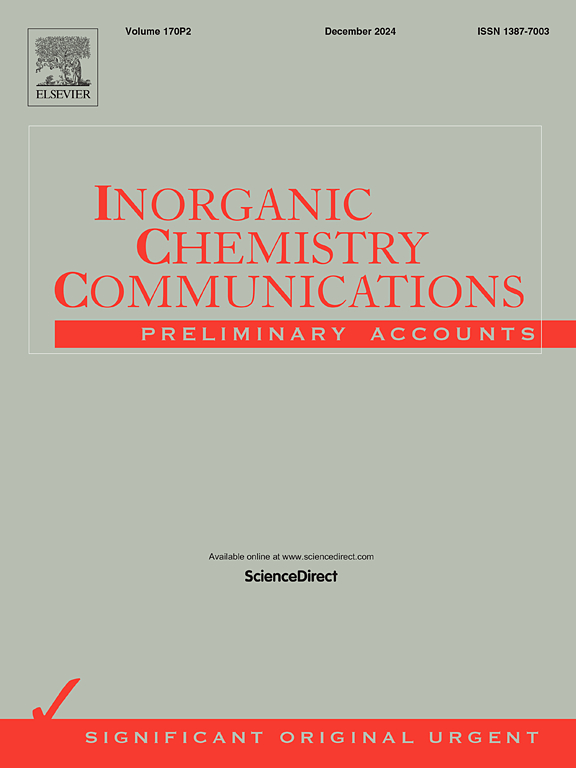Integration of iron phosphide onto CdIn2S4 accelerates carrier separation for efficient photocatalytic hydrogen evolution
IF 4.4
3区 化学
Q1 CHEMISTRY, INORGANIC & NUCLEAR
引用次数: 0
Abstract
Photocatalytic water splitting into H2 is considered an economical and environmentally friendly method for H2 evolution, and rationally designing a non-noble metal cocatalyst maintains an enormous effect on a photocatalytic system. Herein, with metallic FeP, introducing n-type semiconductor CdIn2S4 induces a rapid charge transfer across the FeP/CdIn2S4 Schottky junction, furthering improved photocatalytic activity. The optimal FeP/CdIn2S4 composite presents an impressive hydrogen evolution rate of 1.28 mmol·g−1·h−1, which was nearly 9.8 times higher than that of CdIn2S4 (0.13 mmol·g−1·h−1). Quantum efficiency can reach up to 14.5 % at 420 nm. Systematic investigations reveal that FeP can be reserved as a cocatalyst, providing more reactive sites and lower overpotential for hydrogen evolution. This work offers a new strategy for designing and fabricating efficient photocatalytic energy conversion cocatalysts.

将磷化铁整合到 CdIn2S4 上可加速载流子分离,实现高效光催化氢气进化
光催化水裂解成H2被认为是一种经济、环保的析氢方法,合理设计非贵金属助催化剂对光催化系统有着巨大的影响。通过金属FeP,引入n型半导体CdIn2S4诱导FeP/CdIn2S4肖特基结的快速电荷转移,进一步提高了光催化活性。最佳FeP/CdIn2S4复合材料的析氢速率为1.28 mmol·g−1·h−1,是CdIn2S4 (0.13 mmol·g−1·h−1)的近9.8倍。在420纳米处,量子效率可达14.5%。系统研究表明,FeP可以作为助催化剂保留,为析氢提供更多的反应位点和更低的过电位。这项工作为设计和制造高效的光催化能量转换助催化剂提供了新的思路。
本文章由计算机程序翻译,如有差异,请以英文原文为准。
求助全文
约1分钟内获得全文
求助全文
来源期刊

Inorganic Chemistry Communications
化学-无机化学与核化学
CiteScore
5.50
自引率
7.90%
发文量
1013
审稿时长
53 days
期刊介绍:
Launched in January 1998, Inorganic Chemistry Communications is an international journal dedicated to the rapid publication of short communications in the major areas of inorganic, organometallic and supramolecular chemistry. Topics include synthetic and reaction chemistry, kinetics and mechanisms of reactions, bioinorganic chemistry, photochemistry and the use of metal and organometallic compounds in stoichiometric and catalytic synthesis or organic compounds.
 求助内容:
求助内容: 应助结果提醒方式:
应助结果提醒方式:


